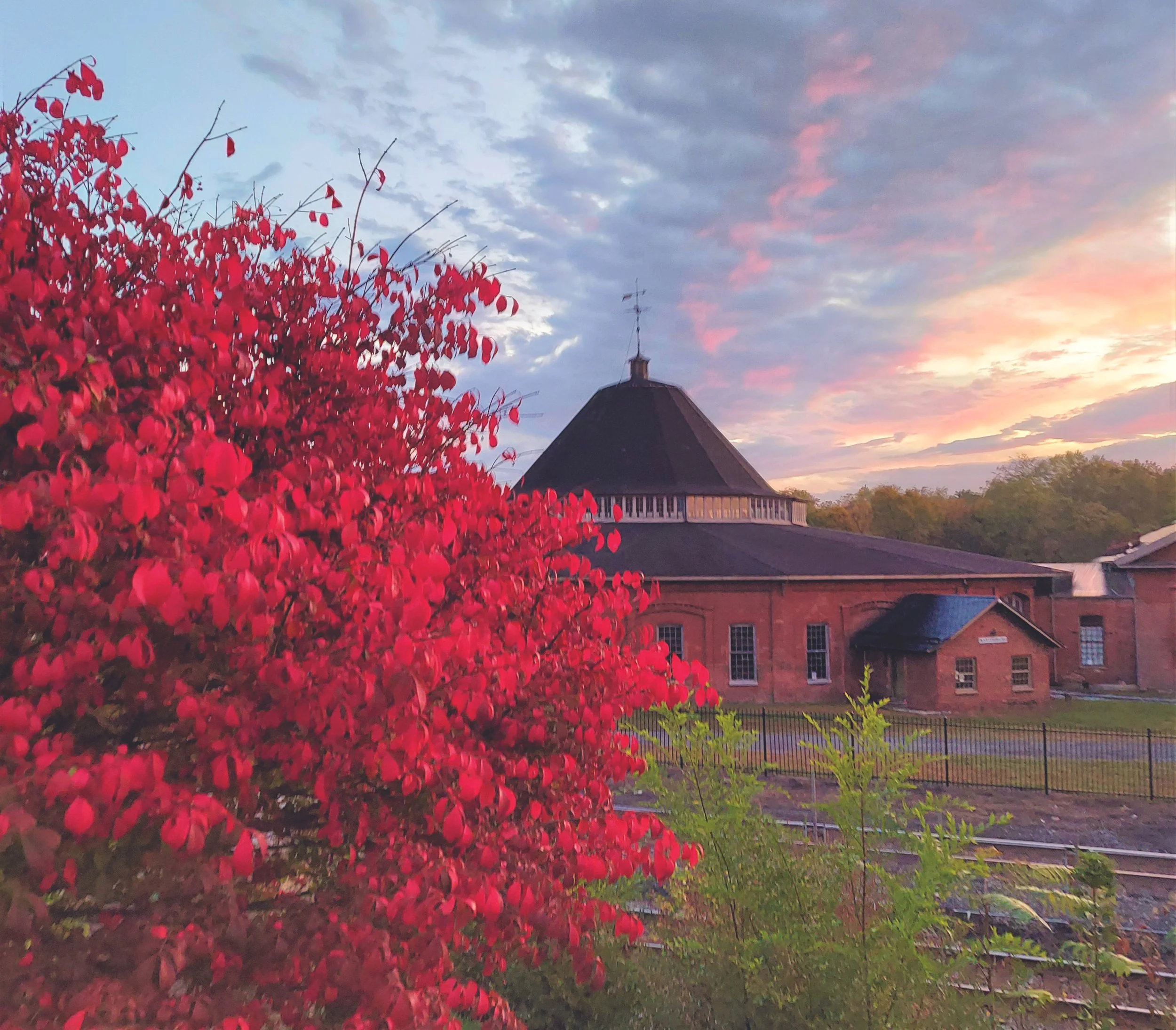Travel through time at Martinsburg’s historic sites.
From railroads to revolutionaries, Martinsburg, West Virginia, has served as the backdrop for many historical events and people. Tread the ground where history was made during your visit to Berkeley County. Read on to map out your trip and learn more about the area’s rich past.
The Martinsburg Roundhouse and Caperton Train Station is one of the oldest functioning commuter rail stations. Open Monday through Friday from 10 a.m. to 4 p.m. from April to the end of October, this attraction is located between Martin and Race streets in Martinsburg and now serves as a stop from Amtrak. The Baltimore and Ohio Railroad Company’s presence in Martinsburg dates back to the 1840s. During the Civil War, Thomas "Stonewall" Jackson's troops stopped all trains going east from Martinsburg, blew up the bridges to the west, and destroyed the roundhouse and machine shops. The complex was rebuilt a few years later and the railroad helped establish West Virginia. The site was host to the first major labor strike in the U.S. in 1877. The buildings are now utilized for a variety of events, including a farmers market, the Founders Day/Martinsburg Heritage Fair Festival, a holiday market, and musical performances. Tours must be booked 10 days in advance of your visit. Donations are requested for admission. Closed-toe footwear is strongly encouraged as the facility has uneven flooring.
The General Adam Stephen House honors the revolutionary war general who was also the founder of Martinsburg. Stephen became the first sheriff of Berkeley County in 1772 and was the county’s largest landowner, starting several businesses, including two mills, a distillery, and a gun factory, along the Tuscarora Creek. He established the town of Martinsburg in 1778. The colonial home, a two and a half story limestone structure, was built between 1772 and 1789 over a natural cave, with stone steps leading down from the basement. The open operates as a museum and is open for tours Saturdays and Sundays from May through October.
Adjoining the General Adam Stephen House is the Triple Brick Museum, a two-story brick building built into an embankment next to nearby railroad tracks. The space served as housing for B&O railroad workers passing through town in the mid-1870s. In early records, it was listed as the “Tribble (Triple) House,” because it was divided into three dwellings. The museum features quilts, flax and wool spinning wheels, military uniforms, railroad items, and other pieces of local history.
Visit the Belle Boyd House, the childhood home of the Confederate spy-turned-actress. As a young woman, Boyd crossed military lines on multiple occasions to pass information to General Stonewall Jackson during the Civil War. After the war, she changed career paths and became an actress, known for playing femme fatale roles. The Belle Boyd House also serves as the county’s historical museum and is the location of the county’s visitors center. Displays include Civil War artifacts, diaries, maps, and newspaper articles; pieces of railroad history; a medical exhibit featuring the area’s three main hospitals; a military section covering Berkeley County residents’ participation in all five branches; artifacts from the area’s early Jewish settlers; and pieces highlighting the county’s African American History. The site is open seven days a week from 9 a.m. to 4 p.m. daily.
Located next door to the Belle Boyd house, the Berkeley County Historical Society has an extensive collection of family records, photographs, books, maps, and more, which highlight the history of Berkeley County and its surrounding areas. The site offers a searchable database of portraits and photographs that will aid the family genealogist or researcher. The archives and research center is open for visitors by appointment only, and visits must be booked at least two weeks in advance.
Morgan Cabin was home to one of the first white settlers in West Virginia, Morgan Morgan, who was the state’s first licensed tavern keeper and builder of West Virginia’s first public road. While the original cabin, built between 1731 and 1734, is not still standing, it was rebuilt in 1976 – using many of the original logs – as a West Virginia and Berkeley County Bicentennial Project. It is decorated as it would have been in the 1700s. Morgan Cabin is open on Sundays from 2-4 p.m. during the month of June. For special tours, call 304-229-8707.
Several of these attractions are part of West Virginia’s Washington Heritage Trail, which also includes historic cemeteries, taverns, churches, and bridges in the Martinsburg area. There are more than 40 official sites on the trail, which can be completed by car or on foot. Enjoy exploring Martinburg’s history and heritage.



